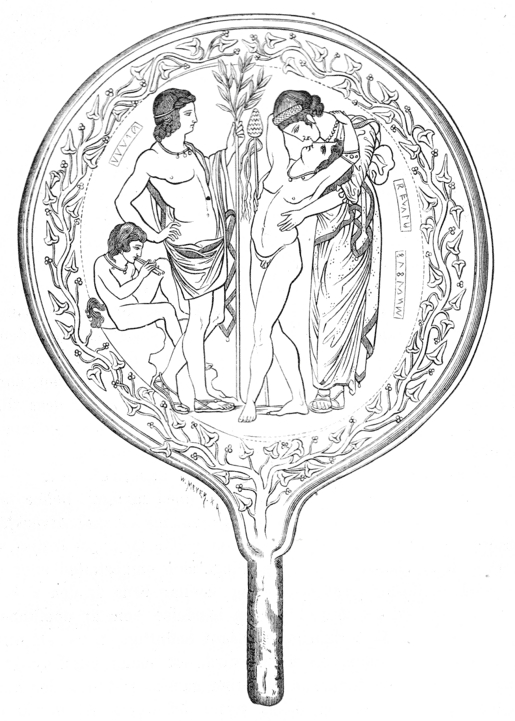
Table of Contents
A princess of Thebes, Semele was the only mortal to ever become the mother of a god in Greek mythology. Also known as ‘Thyone’, Semele was the youngest daughter of Harmonia and the Phoenician hero Cadmus. She is famously known as the mother of Dionysus, the god of merriment and wine.
Semele is known in Greek mythology because of her extraordinary death and the way she became immortal. However, she only has a minor role and doesn’t feature in many myths. Here’s how the story goes:
Who Was Semele?
Semele was the Princess of Thebes. In some accounts, she’s described as being a priestess of Zeus. The story goes that Zeus watched Semele sacrificing a bull to him and fell in love with her. Zeus was known for having many affairs with gods and mortals alike and this was no different. He began to visit her, but he never revealed his true form. Soon, Semele discovered that she was pregnant.
Hera, Zeus’ wife and goddess of marriage, found out about the affair and was furious. She was constantly vengeful and jealous with the women Zeus’ kept having affairs with. When she found out about Semele, she began to plot her revenge against her and her unborn child.
Hera disguised herself as an old woman and gradually befriended Semele. Over time, they grew closer and Semele confided in Hera about her affair and the child she shared with Zeus. At this point, Hera seized the opportunity to plant little seeds of doubt in Semele’s mind about Zeus, saying that he was lying to her. She convinced Semele to ask Zeus to reveal himself in his true form the same way he did with Hera. Semele, who was now beginning to doubt her lover, decided to confront him.
Semele’s Death
The next time Zeus visited Semele, she asked him to grant her a single wish which he said he would do and swore it by the River Styx. Oaths sworn by the River Styx were considered unbreakable. Then Semele requested to see him in his true form.
Zeus knew that a mortal wouldn’t be able to view him in his true from and survive, so he begged her not to ask him to do this. But she insisted and he was forced to grant her the wish since he had taken an oath he couldn’t go back on. He turned into his true form, with lightning bolts and raging thunder and Semele, being only a mortal, burned to death in his glorious light.
Zeus was distraught, and while he couldn’t save Semele, he managed to save Semele’s unborn child. The child had survived Zeus’ presence since he was a demigod – half-god and half-human. Zeus took him from Semele’s ashes, made a deep cut in his own thigh and placed the fetus inside. Once the cut was sealed up, the child stayed in there until the time came for him to be born. Zeus named him Dionysus and is known as the ‘twice-born God’, released from his mother’s womb and again from his father’s thigh.

How Semele Became Immortal
Dionysus was raised by his aunt and uncle (Semele’s sister and her husband) and later on by nymphs. As he grew into a young man, he wished to join the rest of the Gods on the top of Mount Olympus and take his place with them, but he didn’t want to leave his mother in the Underworld.
With Zeus’ permission and help, he journeyed to the Underworld and had his mother released. Dionysus knew she would be in danger as she left the Underworld, so he changed her name to ‘Thyone’ which has two meanings: ‘Raging Queen’ and ‘she who receives sacrifice’. Semele was then made immortal and allowed to live on Olympus among the other gods. She was worshipped as Thyone, the goddess of inspired frenzy or rage.
Wrapping Up
Although there aren’t many myths about Semele, her role as Dionysus’ mother and the intriguing way in which she died and then ascended to Olympus as an immortal or even a goddess makes her one of the most interesting of character in Greek mythology.








